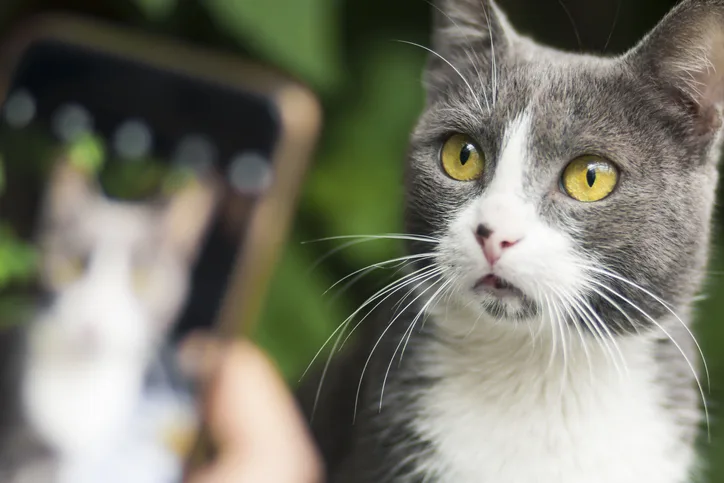
In the Literature
Li Puma MC, Diehl KA, Myrna KE. A remote fluorescein staining and photography protocol for monitoring of ulcerative keratitis in small animal patients: a pilot study. Vet Ophthalmol. 2023;26(5):378-384. doi:10.1111/vop.13104
The Research …
Corneal ulceration is common in companion animals and frequently requires prompt treatment and diligent monitoring.1 As smartphone ownership has increased, clinicians in both veterinary and human medicine have sought to use these devices for a variety of purposes, including treatment monitoring.2
This study described use of smartphone photography in the home to track progress of superficial corneal ulceration in 1 cat and 8 dogs. Inclusion in the study required a diagnosis of superficial corneal ulceration alone. Patients with deep corneal ulceration or corneal infection and/or that required a contact lens for treatment were excluded. Owners (n = 9) were shown how to apply fluorescein dye to the affected eye and subsequently acquire images of the eye via a smartphone adapter consisting of a magnifying lens with adjacent white and cobalt blue lights. Owners were instructed to submit daily images for interpretation by a team of ophthalmologists and residents.
All owners were able to acquire interpretable photographs, and 6 provided photographs and/or videos until ulcer resolution. One patient could not be accurately assessed using owner-provided photographs; persistent corneal ulceration not visible on the photographs was found during in-person examination. The authors stated this was because the ulceration was in the region of cornea partially obscured by the nictitating membrane.
Owners were asked to complete a feasibility survey following the study. Five owners reported that applying the fluorescein dye was more challenging than applying topical ocular medications. Seven owners stated they prefer at-home monitoring to in-person monitoring by a clinician.
Limitations of the study included a small sample size and inclusion of cases with only simple, uncomplicated ulcers. Time required from the veterinary team to both instruct owners how to acquire the photographs and interpret daily images was not addressed. The authors concluded that this technology may be appropriate during management of corneal ulceration in small animals but is not a replacement for in-person veterinary care.
… The Takeaways
Key pearls to put into practice:
Smartphone photography for at-home monitoring of uncomplicated superficial corneal ulceration may be feasible with careful case selection and provision of suitable training to pet owners.
Most owners in this study preferred the convenience of at-home monitoring compared with an in-person recheck at a veterinary clinic.
Smartphone photography for at-home monitoring of corneal ulceration is unlikely to be an adequate replacement for in-person ophthalmic examination, as lesions may be obscured.
You are reading 2-Minute Takeaways, a research summary resource presented by Clinician’s Brief. Clinician’s Brief does not conduct primary research.